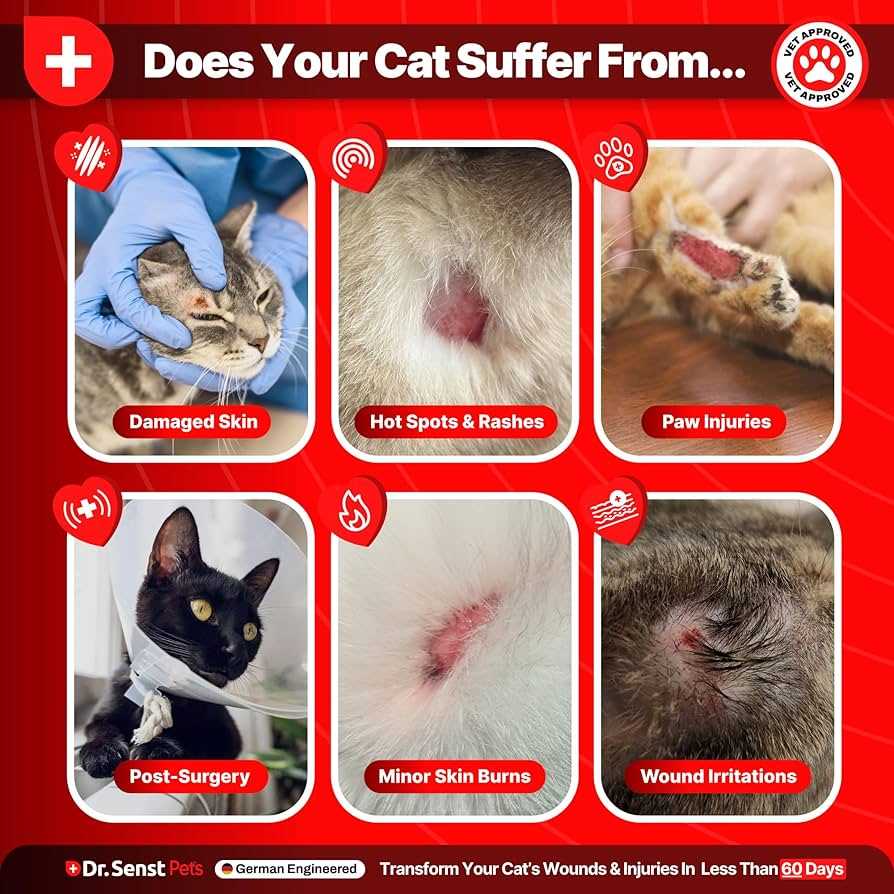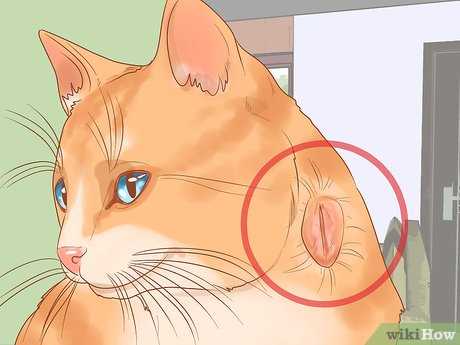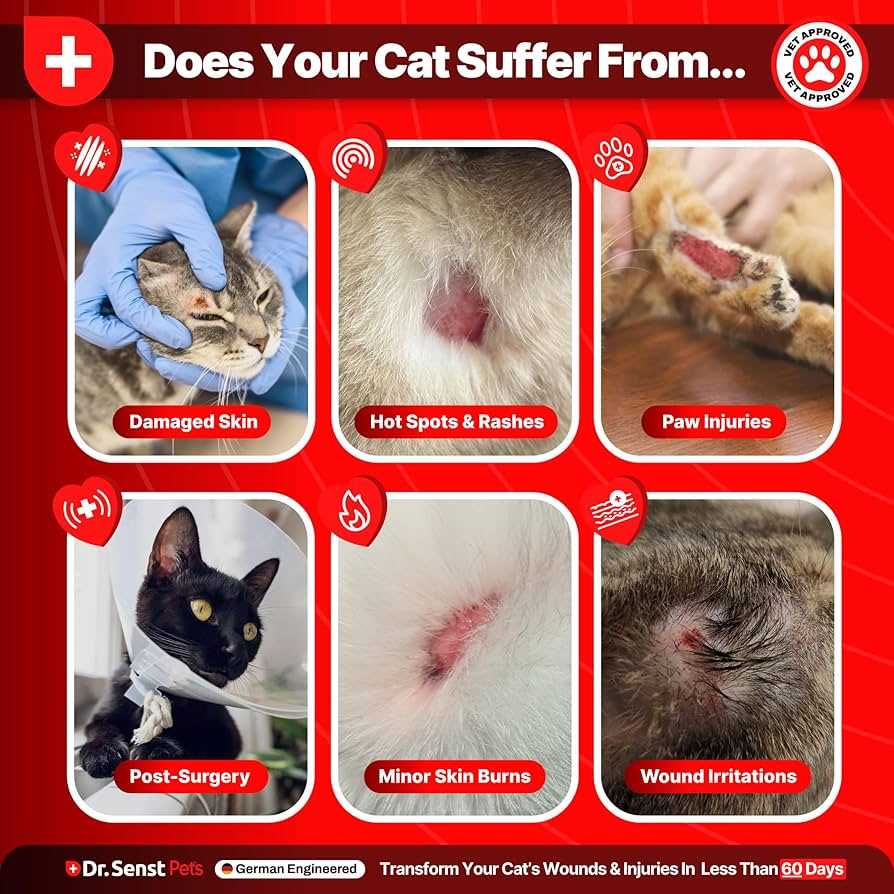



First, gather your supplies: clean water, gentle soap, sterile gauze, and antiseptic solution. It’s crucial to maintain a calm atmosphere, so make sure I’m relaxed before you proceed.
Begin by rinsing the affected area with lukewarm water to remove any dirt or debris. If the area is particularly dirty, a mild soap can be used, but make sure to rinse thoroughly. Pat the area dry with a clean towel or sterile gauze.
Next, apply a suitable antiseptic solution. Choose one specifically designed for pets, avoiding any products that contain alcohol or hydrogen peroxide, as these can cause irritation. Gently dab the solution on the area, ensuring it covers the entire surface.
Lastly, if necessary, cover the area with a sterile bandage. This will help protect it from further injury and keep it clean. Monitor the site for any signs of infection, such as redness or swelling, and don’t hesitate to reach out to a vet if I seem uncomfortable or if the injury doesn’t improve.
Steps for Treating a Feline Injury
First, gather all necessary supplies: antiseptic solution, sterile gauze, and adhesive tape. Ensure everything is clean and ready for use.
Gently restrain me to prevent sudden movements. A towel can help wrap me snugly, leaving only the injured area exposed.
Use the antiseptic solution on a cotton ball or gauze pad. Dab the area carefully, avoiding excessive pressure. Clean from the center outward, removing any dirt or debris.
Next, apply a sterile gauze pad to the site of the injury. Secure it with adhesive tape, ensuring it’s snug but not too tight, allowing for some airflow.
Monitor the area daily. Look for signs of infection such as swelling, redness, or discharge. If any of these occur, consult a veterinarian.
Keep the area dry and avoid letting me lick it. An Elizabethan collar may be necessary to prevent self-grooming.
Lastly, ensure I am comfortable. Provide a quiet space to recover, with plenty of love and attention. Your care will help me heal faster.
Assessing the Severity of the Wound
First, I look for the size of the injury. Small, superficial cuts may not require much attention, while deeper lacerations need immediate care. If the area is oozing blood or fluid, that’s a sign to act quickly.
- Check for swelling: If the surrounding area is puffy, it could indicate an infection.
- Assess the depth: A scratch might just need cleaning, but a puncture or gash could involve underlying tissues.
- Look for foreign objects: Sometimes, debris can be embedded, requiring careful removal.
Next, I gauge my behavior. If I’m unusually agitated or in pain, it suggests the situation is serious. If I’m grooming the area excessively, it might mean I’m trying to relieve discomfort.
Check for any signs of infection, such as redness or heat. If the injury looks inflamed, it’s wise to consult a vet.
Lastly, consider my overall health. Conditions like diabetes can complicate healing processes. If I have any underlying issues, extra caution is necessary.
If you’re a fellow feline enthusiast, remember to keep your grooming tools handy, like the best brush for maine coon cats, to maintain my fabulous coat while ensuring I stay clean and healthy.
Gathering Necessary Supplies for Cleaning
First, grab some sterile gauze pads. These will help absorb any fluids and provide a clean barrier for the area.
Next, a mild antiseptic solution is key. Look for options specifically made for pets, ensuring they are safe for sensitive skin.
Have a pair of tweezers handy. They are perfect for removing any debris or foreign objects that may be stuck in the fur or around the injury.
A soft, clean cloth will be useful for drying the area after cleaning. Choose something that won’t irritate the skin.
Finally, consider having a pet-safe bandage or wrap on hand. This will help protect the area from further injury and keep it clean during the healing process.
Make sure all these items are within reach before starting. This way, I won’t have to worry about interruptions while caring for the injury.
Steps to Safely Restrain Your Feline Friend

First, I recommend getting a soft towel or blanket. This can help wrap me comfortably, making it easier for you to hold me without causing stress. Wrap me snugly, leaving my head exposed; this calms me down.
Next, use gentle but firm hands. Place one hand on my chest and the other around my back, providing support without squeezing. Speak softly to reassure me; your voice can be soothing.
If I wiggle too much, consider a second person to help. They can gently hold my back legs or distract me with a toy. Always be careful not to hold me too tightly, as this can cause panic.
Using a Carrier

A carrier can provide a secure space for me. Place it on a stable surface and open the door. If I’m reluctant, you can lure me inside with treats. Once I’m in, close the door gently. This keeps me safe while you work.
Pay Attention to My Body Language
Watch for signs of stress or discomfort. If I hiss, growl, or try to escape, take a break and give me time to relax. Patience is key; rushing can create more anxiety. Always prioritize my comfort and safety during the entire process.
Proper Techniques for Wound Care

Ensure the area surrounding the injury is calm and clean before starting the procedure. Gently hold the affected area to prevent sudden movements. Use lukewarm water to rinse away dirt or debris. This helps in reducing the risk of infection.
Using Antiseptics
After rinsing, apply a suitable antiseptic solution. Opt for one that is safe for felines, such as diluted chlorhexidine or saline solution. Avoid using alcohol or hydrogen peroxide, as they can irritate sensitive skin.
Bandaging the Area
If necessary, cover the site with a sterile bandage to protect it from further injury and contamination. Ensure it is snug but not too tight to restrict blood flow. Change the dressing daily or if it becomes soiled. For more information on cleanliness, check this link: do air scrubbers work for covid 19.
Keep a close eye on any signs of infection, such as increased redness, swelling, or discharge. If you notice these symptoms, consult a veterinarian immediately.
Applying Antiseptic and Bandaging Techniques
First, I choose a suitable antiseptic solution, preferably one that’s safe for furry friends. I apply it gently to the affected area using a clean cotton ball or gauze. Avoid using products with alcohol, as they can sting and cause discomfort.
Next, I let the antiseptic dry completely before proceeding. This step is crucial, as it ensures that the treatment is effective and minimizes the risk of further irritation.
For bandaging, I select a non-stick sterile pad that matches the size of the lesion. I place it over the treated area and secure it in place using a cohesive bandage or medical tape. It’s essential to wrap snugly but not too tightly to avoid restricting blood flow.
After bandaging, I monitor the dressing regularly for signs of moisture or dirt. If the bandage becomes wet or soiled, I change it promptly to keep the area clean and promote healing.
Lastly, I always keep an eye on my behavior. If I start licking or fussing with the bandage, it might be time to switch to a protective collar to prevent me from interfering with the healing process.
Monitoring for Signs of Infection
Keep an eye on the area for any changes. Redness, swelling, or warmth around the site can indicate an issue. If there’s discharge that looks yellow, green, or has a foul smell, that’s a clear sign of infection.
Signs to Watch For
| Symptom | Description |
|---|---|
| Redness | A noticeable change in color around the injury. |
| Swelling | Increased size or puffiness around the area. |
| Warmth | Feeling hotter than the surrounding skin. |
| Discharge | Any fluid leaking that is yellow, green, or has a bad smell. |
| Pain | Visible discomfort when the area is touched. |
If I notice any of these signs, I let my human know right away. They might need to take me to the vet for treatment. It’s vital to act quickly to ensure the best outcome.
FAQ:
What steps should I follow to clean an open wound on my cat?
To clean an open wound on your cat, first gather the necessary supplies: sterile saline solution, clean gauze or a soft cloth, antiseptic solution safe for pets, and possibly some treats to keep your cat calm. Begin by ensuring your cat is in a comfortable position. Gently remove any dirt or debris around the wound using the saline solution and a soft cloth. Pat the area dry with clean gauze. If there’s noticeable bleeding, apply gentle pressure with the gauze until it stops. After the area is dry, apply a pet-safe antiseptic. Monitor the wound for signs of infection, such as swelling or discharge, and consult your veterinarian if necessary.
How can I tell if my cat’s wound is infected?
Signs of infection in a cat’s wound include increased redness, swelling, warmth around the area, pus or other discharge, and a foul odor. Your cat may also show signs of discomfort or pain, such as excessive grooming of the area or reluctance to move. If you notice any of these symptoms, it’s important to consult your veterinarian promptly. They can assess the wound and may prescribe antibiotics or other treatments to help your cat heal properly.
Is it safe to use human antiseptic products on my cat’s wound?
No, it’s not safe to use human antiseptic products on your cat’s wound. Many human antiseptics contain ingredients that can be harmful to pets, such as alcohol or hydrogen peroxide, which can cause irritation or delay healing. Instead, opt for antiseptics specifically formulated for animals. If you’re unsure about what products to use, it’s best to consult your veterinarian for recommendations tailored to your cat’s needs.







